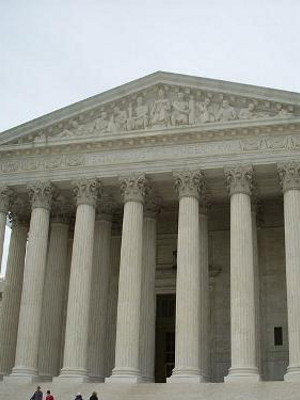Law should prioritize process and principle rather than politics and results. The judiciary should rule as narrowly as possible to resolve the actual case or controversy presented. Yet with Bush v. Gore, where the Court prevented Florida from deciding a state electoral and constitutional matter, Citizens United, where the Court vastly expanded the issue presented by the litigants, telling them to brief and argue issues never presented to the Court (thus violating the judicial principle that a court should only rule on the actual case or controversy presented by the litigants), and now on the healthcare case, where the Court has chosen to act on broad issues on a fast track, judicial overreach is apparent.
The case and controversy constraint on judges is a basic, constitutional separation of powers principle that distinguishes lawmakers from judges. A judge should rule only on those issues presented to the Court by parties with standing who have an actual case or controversy for which they request redress. Judges’ rulings should not extend more broadly than needed. Critics say the Court under Chief Justice John Roberts has legislated from the bench, thus exposing its doctrinal hypocrisy in preaching judicial restraint yet practicing activism. They claim the Court has shed its pretense of judicial minimalism and moderation as it aggressively shapes law in accordance with its conservative bias. Defenders say the Court is simply interpreting the Constitution correctly, and restoring balance by correcting the excessive liberalism of the Court in prior decades.
In Citizens United, dissenters took issue with the procedure as well as the substance of the ruling. The case, which wiped out decades of precedent and statutory regulation, was originally far more limited – a challenge to a federal agency’s ban on a single anti-Hillary Clinton campaign video. The breadth of the ruling, and the manner in which the Court intervened to widen the scope of the case, left the Court open to criticism for overstepping its role and disregarding the many constitutional limitations on judicial power – for example, Article III’s “case or controversy” limitation on standing, and doctrines on mootness, ripeness, and political questions (the Court should not resolve questions best left to the political process) – designed to check any runaway court. (See Dworkin’s articles in The New York Review of Books: “The Devastating Decision,” Feb. 25, 2010; and “The Decision That Threatens Democracy,” May 13, 2010).
According to Supreme Court historian Jeffrey Toobin, the Roberts Court is marked by “an aggressive, line-drawing conservatism that appears bent on remaking great swaths of Supreme Court precedent.” Retired Justice John Paul Stevens says the Court changed during his 35-year tenure: “Look at Citizens United. If it is not necessary to decide a case on a very broad constitutional ground, when other grounds are available, then doesn’t that create the likelihood that people will think you’re not following the rules?”
Toobin writes, “Chief Justice John G. Roberts Jr., is fond of pointing out the original reason that judges came to wear black robes. It’s to make them look alike, to minimize the differences between the individuals that occupy the role and to suggest that the law will be applied even-handedly, no matter who happens to be dressed in black. Well, that may be the theory, but [recent events] show that the Supreme Court is riven by the same partisan divisions as the rest of Washington.”
Stevens’ Citizens United dissent concludes: “While American democracy is imperfect, few outside the majority of this Court would have thought its flaws included a dearth of corporate money in politics.” Citizens United has been widely called the worst Supreme Court ruling since Bush v. Gore in 2000, in which Stevens wrote in dissent that the ruling was an insult to the judiciary which would “only lend credence to the most cynical appraisal of the work of judges throughout the land . . . Although we may never know with complete certainty the identity of the winner of this year’s presidential election, the identity of the loser is perfectly clear. It is the Nation’s confidence in the judge as an impartial guardian of the rule of law.”
Stanford law professor Pamela Karlan says this is “a court that’s much more friendly to the powerful than the powerless.” Lisa Blatt, who served for thirteen years in the Solicitor General’s office (which represents the U.S. government before the Court) says, “This is a business court. Now it’s the era of the corporation and the interests of business.” The Citizens United ruling has already impacted American electoral politics as groups that are only nominally independent of the candidates can funnel unlimited funding from wealthy donors. Critics contend that elections are now essentially a billionaire’s bash and that American democracy has become a plutocracy.
What can be done to restore faith in the Court as a trusted guardian of the principles which guide the constitutional rule of law? Part IV will look at proposals to restrain Supreme Court justices and restore public trust in the Court. Part IV will also consider strategies to fix America’s broken healthcare system if the Court rules against the Act.
About the author:
The author, a constitutional law scholar, member of the California Bar and TNP contributing writer, lectures on law, ethics and critical thinking in the undergraduate and graduate programs at the University of New York in Prague.
published: 14. 5. 2012







